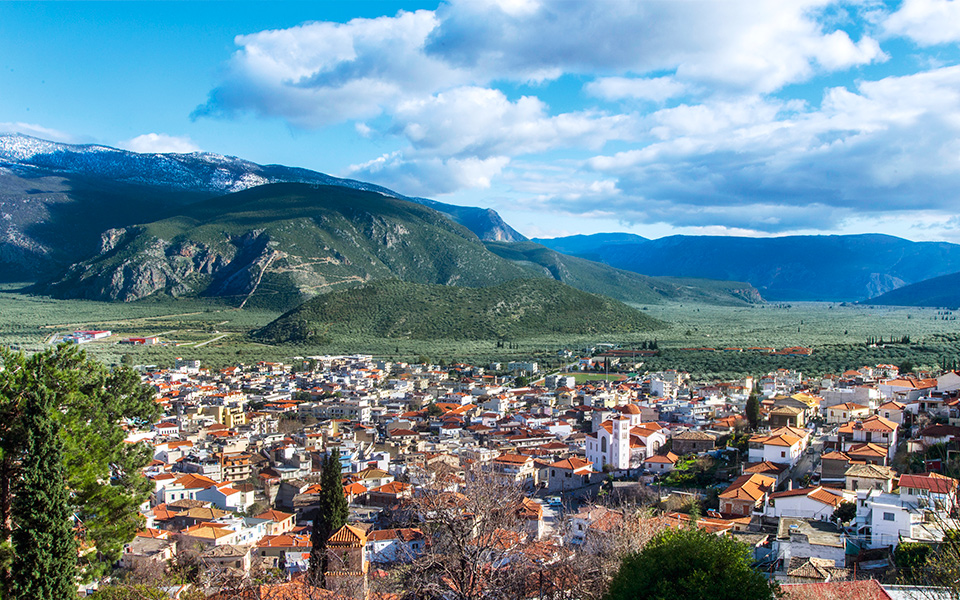The town of Amfissa can be described as a hopeless romantic, a fact that you might not expect if you haven’t walked around it and gotten to know its people. This is particularly true during this time of year, when myths come alive and the spirit of the ill-fated Konstantis ‘reawakens’, as locals and visitors alike celebrate a beloved carnival tradition (more on that below).
The town has been inhabited since antiquity, as is evidenced by the walls of its acropolis, on top of which the Castle of Oria was later built. In myth, Amfissa was Apollo’s lover – a fact that makes sense given that it is only about half-an-hour away from ancient Delphi and its sanctuary dedicated to the god of light. It is also only 25 minutes away from seaside Galaxidi, making it a great base for any traveler to the broader area.
As a destination, Amfissa holds much to interest visitors intrigued by the history and evolution of traditions. Because here in the capital of the area of Fokida, there is an abundance of traditions. Thymios Koufalis, the owner of Mikros Kafes (Little Café) in Kehagia Square quotes a well-known lyric by singer-songwriter Dionysis Savvopoulous when describing his town. Amfissa is, he says, “the Greece that resists, the Greece that endures.”
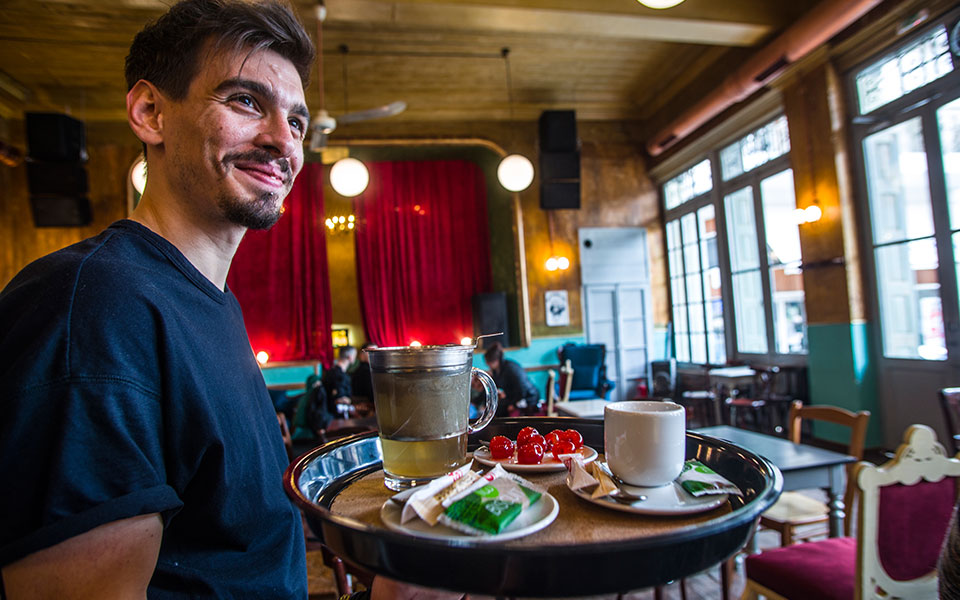
© Clairy Moustafellou
Retro touches
When legendary filmmaker Theo Angelopoulos filmed scenes for his masterpiece, The Travelling Players in this traditional café/theater it was called Giali Kafene. Today the renovated “Megalo Kafeneio 1929”, as it is called, has a new lease on life, playing low-key jazz and funk from the morning until late at night, and hosting live music and stand-up comedy nights as well as other events in the protected building.
Amfissa has a plethora of retro touches that set it apart. Particularly in the town center, it is as if there is an unspoken agreement among the residents to preserve everything that has resisted the passage of time.
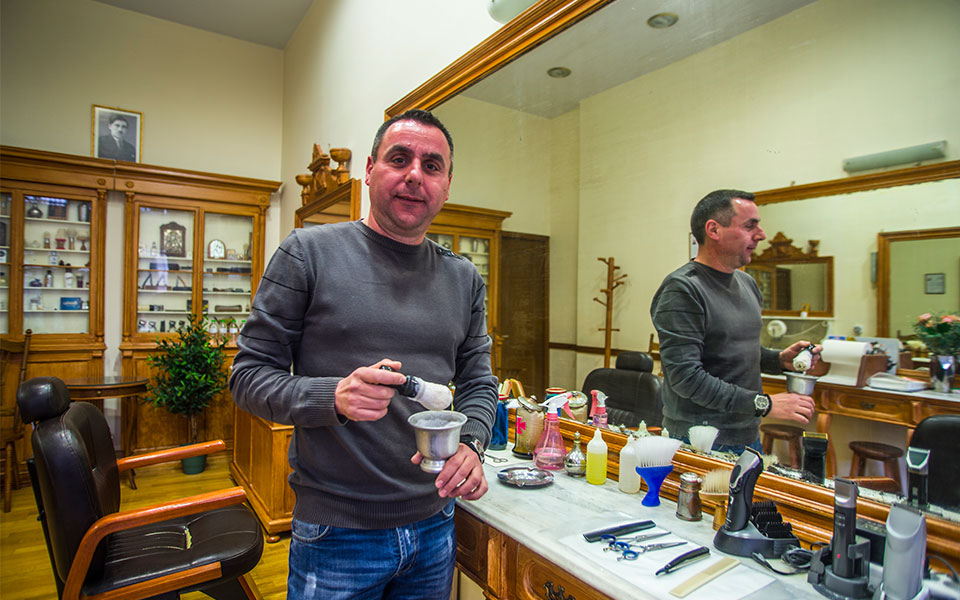
© Clairy Moustafellou
For instance here you’ll find Koureion tou Patrinopoulou – a barbershop that has been open since at least 1907 as the black-and-white photo on its wall indicates – and right next to it, “Chyma kai Tsouvalata” – a small shop opened two years ago by Markos Thermogiannis, who returned to his hometown and sells pulses, nuts, spices and other fine products by the kilo.
An artistic and artisanal vein runs through Amfissa; it’s evident in the clothes and accessories shop run by Maria Varotsi; in the workshop of George Skylogiannis, a professor of the Athens School of Fine Arts; and in the works of the painter Dimitris Kanellou that you will see in Fasitsas’ taverna.
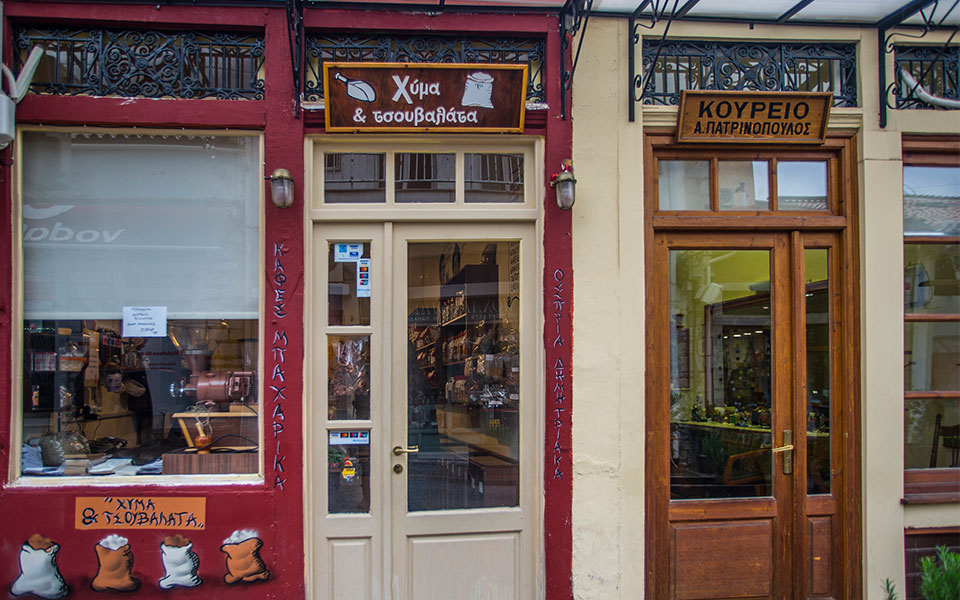
© Clairy Moustafellou
In Fasitsas’ taverna (aka O Sokratis) – the high-ceilinged old tsipouro and meze establishment on Laou Square – the wood-burning heater creates a cozy atmosphere, at times topped with a pot of water left to steam, at others with grilling sausages.
Entering the old Faropoulos tobacco shop – which today operates as a taverna – the ever buoyant owner pulls a rope, causing bells to jangle which accompany cheery his cry of “Welcome girls!”
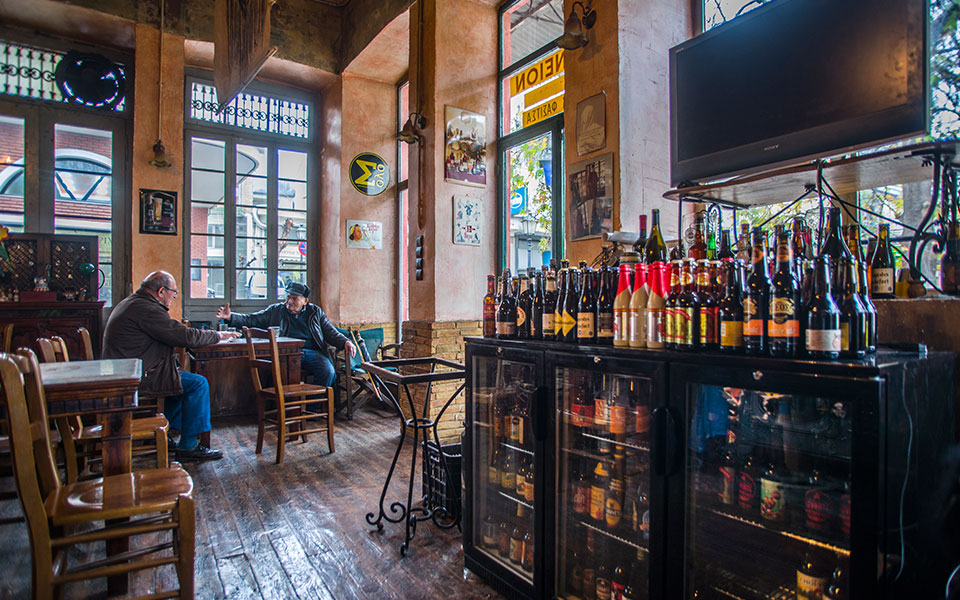
© Clairy Moustafellou
The latter establishment is filled with old adverts, gramophones and stuffed animal heads – the last fortunately quite high up for those of us who find them somewhat disturbing, like when we were children.
The nostalgia-rich aspect of the center of Amfissa is completed by the historic homes of leading figures of the Greek Revolution of 1821, such as that of Panourgas which is soon to house a new Ethnological Museum, and others with their beautiful wooden gates. But what really wins one over is the gentleness of the locals, and their good manners.
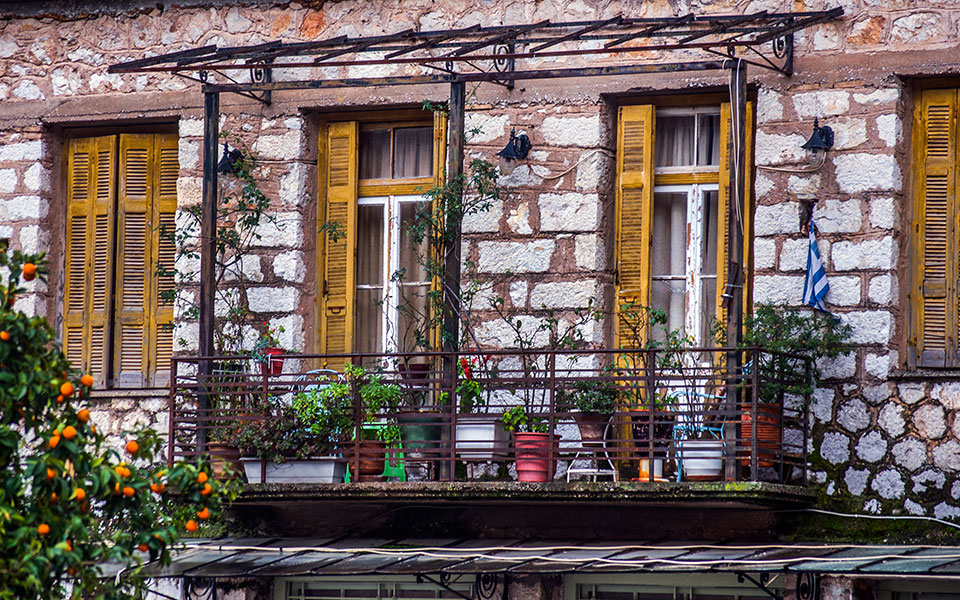
© Clairy Moustafellou
The Modern Side of Amfissa
At the same time Amfissa, the seat of the Municipality of Delphi, is a modern small town. According to Deputy Mayor Aris Angelopoulos, it has a little over 7,000 permanent residents. As a place to live, it’s very human, with gardens and orange trees, and with little traffic noise.
And as Athanasios Panagiotopoulos, the mayor of Delphi explains to us, it is one of the few Greek towns that has been characterized in its entirety as an archaeological zone, with the density of buildings kept low.
It is one of those towns on which a quietness descends in the early afternoon, before reawakening in the early evening through workshops for young and old of all kinds: theater, literature, music and, of course, the visual arts, the last of which are working at a frenetic pace in order to prepare for Carnival.
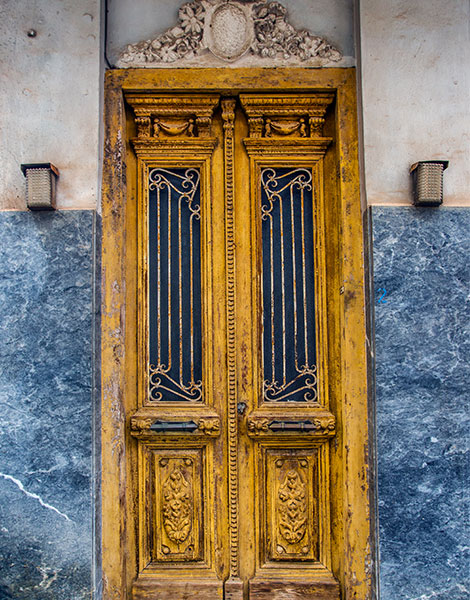
© Clairy Moustafellou
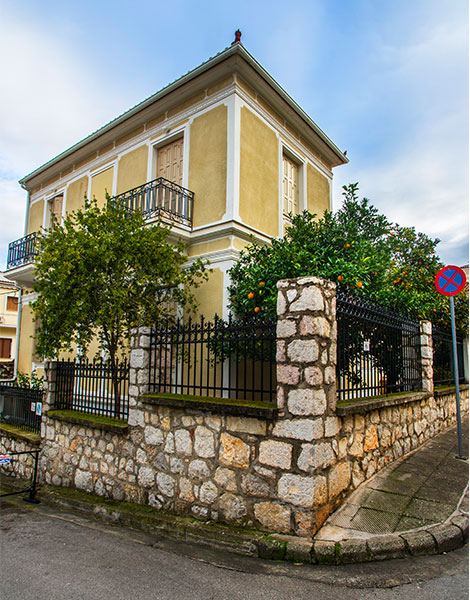
© Clairy Moustafellou
The four main central squares – Kehagia, Laou, Isaia and Antistaseos – are linked by pedestrian-friendly streets where you will find all manner of shops and cafés, such as Briki at the intersection of the streets Gatou and N. Giagtzi, the latter of which will soon be completely pedestrianized.
On one’s first evening in town, it is easy to be fooled into thinking one has arrived in a ghost town, although Amfissa has a total of 55 (!) food and drink establishments. Many of these are concentrated around N. Kordoni Street, such as Stavedo, which is aimed primarily at young people, Cactus, Nord – which is attempting acquaint locals with the concept of a wine bar, the Italian restaurant Flame, and others.
Of course, when talking about food in Amfissa, one must bear in mind that the scene will always be dominated by classic tavernas and grill houses.
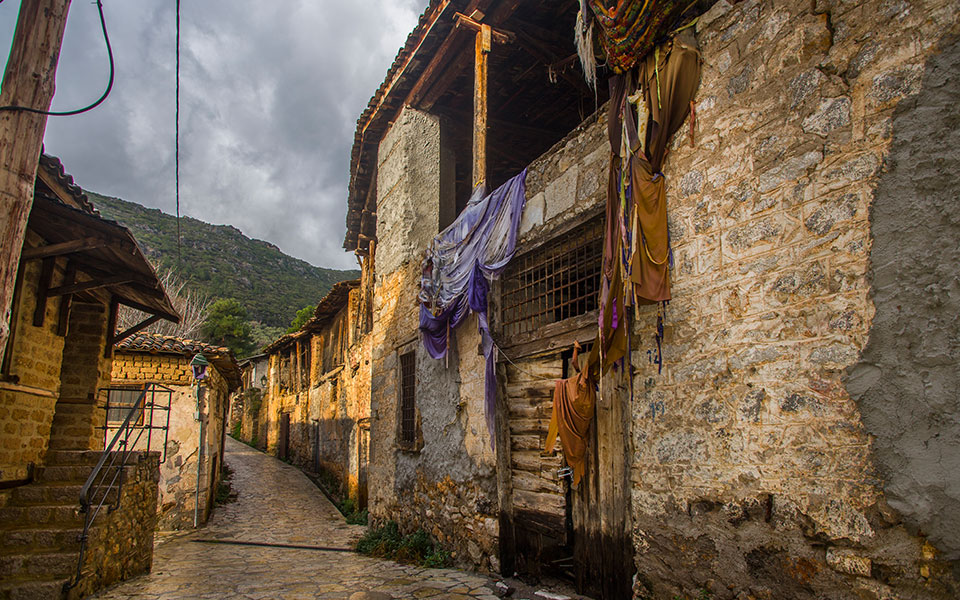
© Clairy Moustafellou
Harmaina
Today semi-derelict, Harmaina is the old tanning district. The art of tanning arrived in Amfissa before 1600 and was one of the town’s primary sources of income until the interwar period.
Its tanneries were renowned for using plant extracts that produced exceptional quality leathers and parchments, a large portion of which were exported to Rome and other cities abroad, making Amfissa an important commercial center in pre-industrial Greece.
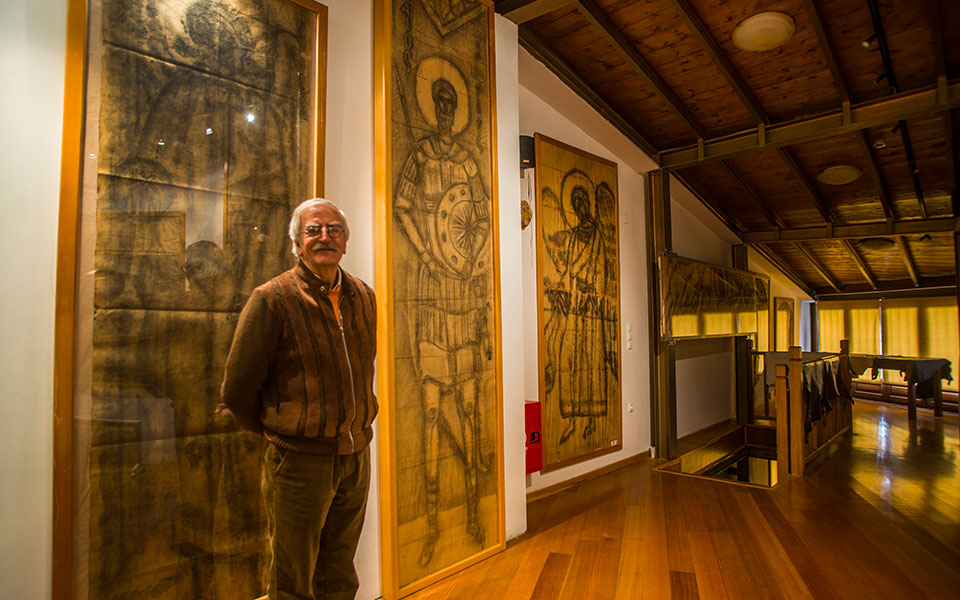
© Clairy Moustafellou
In 1989, 42 buildings in the tanning district were declared protected edifices, and in 2011 the area was awarded the EDEN – European Destinations of Excellence award. Today, the discreetly-lit alleys have their own distinct charm, while the area is enlivened by the eponymous café-taverna and the Spyros Papaloukas Municipal Art Gallery.
The small guesthouse Omoplinthos is an exemplar of the type of touristic development that could give new life to Harmaina.
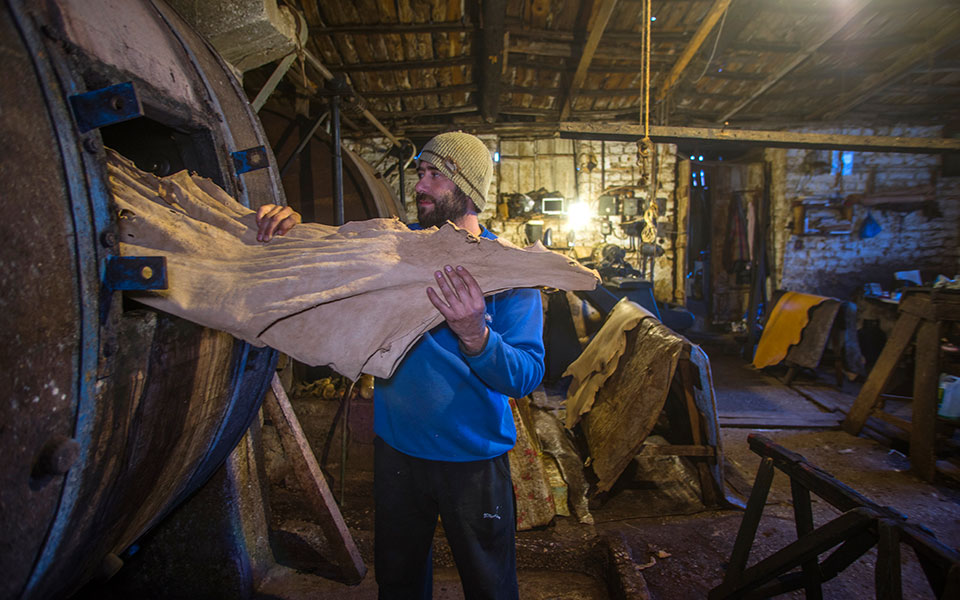
© Clairy Moustafellou
Crafts Passed down through generations
33-year-old Spyros Merinopoulos can’t remember how old he was when he began learning the craft of tanning leather. Today he runs Harmaina’s sole remaining tannery, and continues to process leather exclusively using plant-based extracts.
His clients are saddle makers from around Greece and top bookbinders in Athens such as Babis Legas, Ioannis Mantzakos, Georgios Balogiannis and others. The more authentic the leather tanning process is, the better it is for gold printing and other aspects of bookbinding.
How unique does he himself feel? “I am not alone here in Harmaina. Everywhere there are people who love their work. If you’re not romantic and you don’t love what you do, it is better to leave it,” he says standing among animal hides at various stages of processing.
And if his three-year-old son Konstantinos wants to follow in his footsteps? “On the one hand it would please me greatly, on the other I would be concerned as he would be choosing a path that is very difficult.”
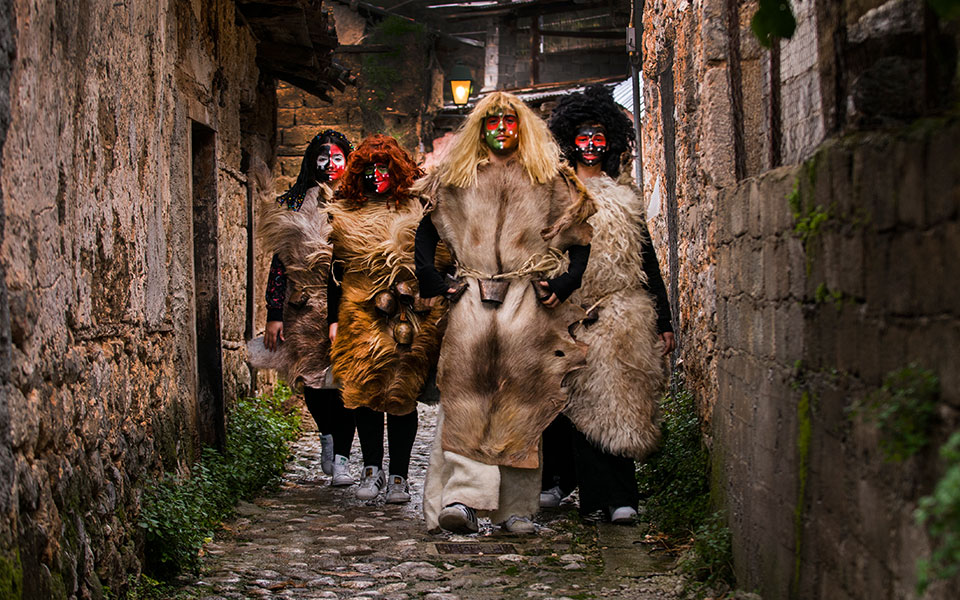
© Clairy Moustafellou
A Fateful Love
Harmaina is also identified with the fateful love between Konstantis and Lenio, which came to a violent end when she was struck by lightning at the Spring of Harmaina. The young tanner Konstantis could not bear the loss of his love, and the next day was found dead at the foot of the castle. Since then it is said that Konstantis’ ghost continues to roam around the Spring of Harmaina.
This haunting tale is the basis for a local Carnival tradition attracts thousands visitors to the area. From when they are young, local inhabitants dress up as sheep, fairies and elves. One of those who has grown up taking part in this ritual is Panagiotis Merinopoulos, who today is a key figure in its revival. He is also known as Konstantis, as he has taken on the role of the spirit three times to date.
The tradition begins on the Friday before Clean Monday (this year it will be on the 16th of February) with the ‘Waking and Calling of Konstantis’. On the following day there is the ‘Night of the Spirits’ and a huge procession which ends in Kehagia Square. Last year at least 3,000 people took part, dressed in elaborate costumes featuring leather, bells and ropes, the three elements of the area’s traditional crafts.
On the Sunday there is a large Carnival celebration, while on Clean Monday whoever hasn’t gotten their fill of festivities heads to Galaxidi where a traditional ‘flour war’ is held.
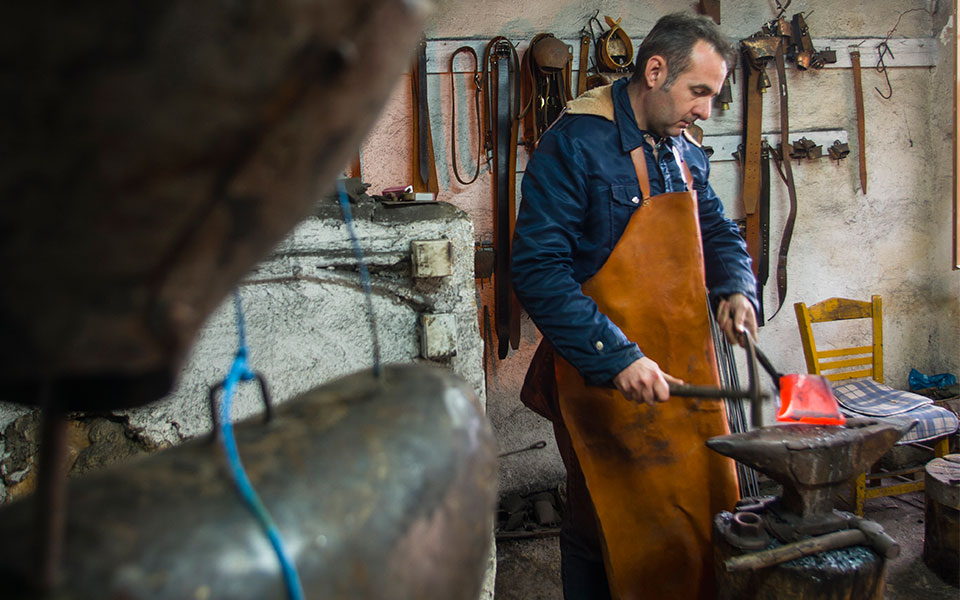
© Clairy Moustafellou
Bell and Rope-makers
Aside from leather tanning, the area’s other two traditional crafts were rope-making (which is no longer practiced) and bell-making.
Christos Papadimos, the last remaining bell maker in Amfissa, has clients throughout the Balkans, making his creations in a small workshop in the area of Akropotamia (tel. +30 6944-919571).
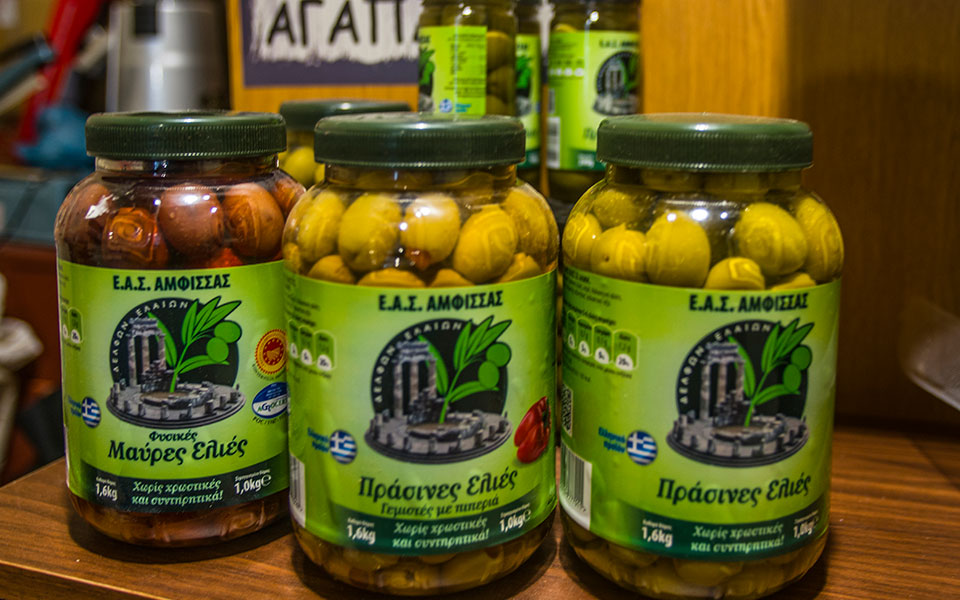
© Clairy Moustafellou
The Renowned Olive Forest of Elaionas
Around 1.2 million trees producing the renowned Amfissis olive create “a sea of olive trees” as a foreign poet once described the landscape in the area known as Elaionas (which simply means ‘Olive Grove’ in Greek).
Beneath the fertile soil lie unknown hidden treasures from antiquity, as the vast olive forest covers the route ancient worshipers followed from the ancient port of Kirra (today Itea) to the Oracle of Delphi.
Getting There
From Athens the journey takes about 2.5-3hrs by car at a cost of about 35 euros for gas and tolls. KTEL buses also leave daily (taking 3 hours and 15 minutes). For timetables and more information visit www.ktel-fokidas.gr (tel. +30 22650-29900).
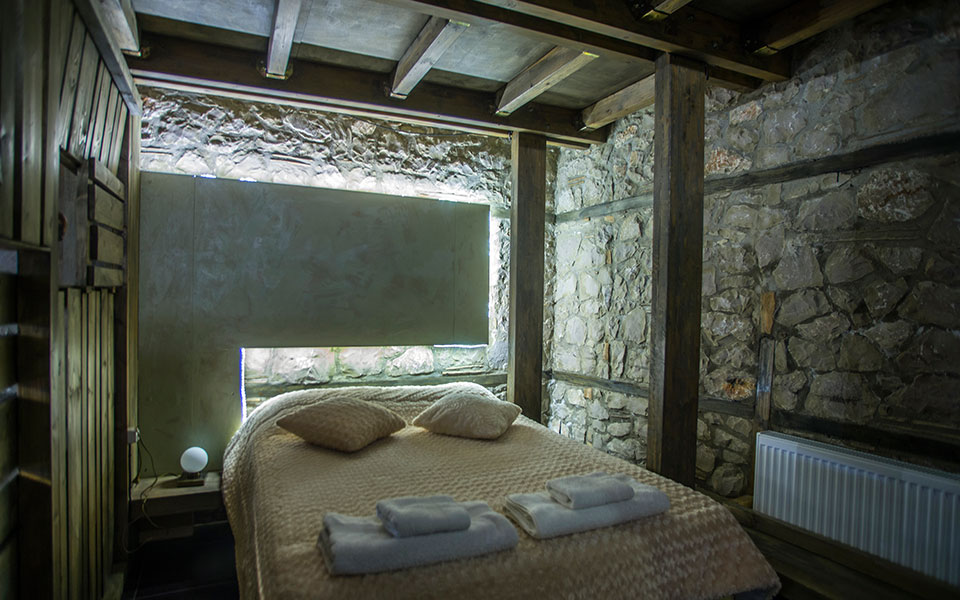
© Clairy Moustafellou
Where to Stay
Omoplinthos (tel. +30 6937-078862). A stone-built guesthouse in Harmaina which preserves the traditional architectural style of the district and has a sophisticated atmosphere with modern touches. The guesthouse features apartments with kitchens, independent heating, as well as wood-burning stoves adding to their coziness. From 100 euros.
Hotel Amfissaeum (tel. +30 22650-22161, +30 6944-503530). A central hotel in Amfissa. Pet-friendly, 60 euros for a double room with breakfast.
Kelari Studios (tel. +30 22650-29429). A guesthouse in the quiet village of Sernikaki, just 4 km from Amfissa.
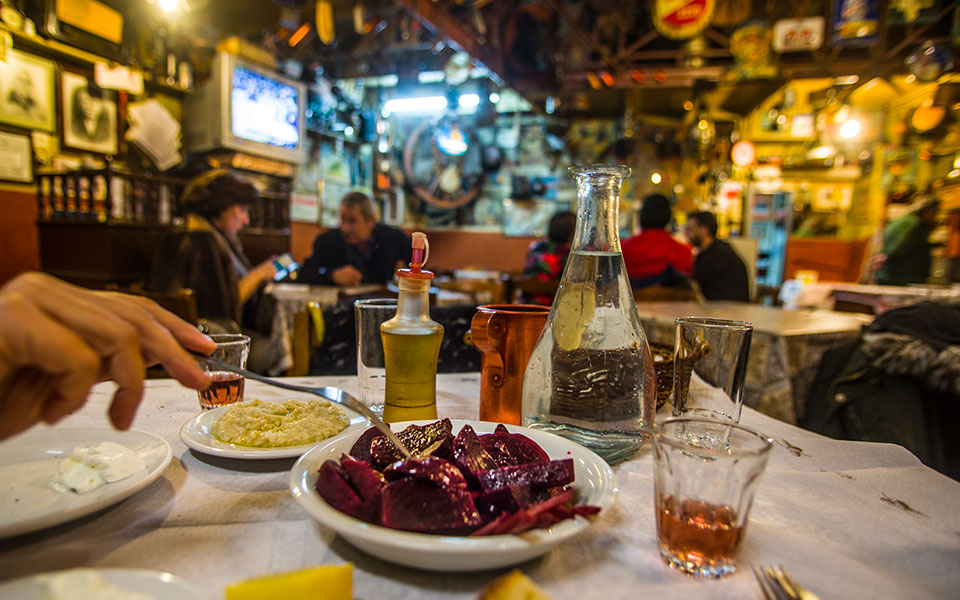
© Clairy Moustafellou
Where to Eat / Drink
The town is known for the excellent meat offered in tavernas such as Aristogefsis, (tel. +30 22653-00601) as well as for its tsipouradika, such as O Sokratis (tel. +30 22650-28743), also knowns as Fasitsas’.
A favourite hang-out for younger generations is the Oinomageirio tou Faropoulou (tel. +30 22650-28823, +30 6974-458384) for potatoes with eggs cooked on the gas stove, salted cod and garlic, and meat patties. Open every night except Sundays.
For more modern cuisine head to Elladografia (tel. +30 22653-00422, +30 6932-209578) or the Italian restaurant Flame (tel. +30 22650-29724).
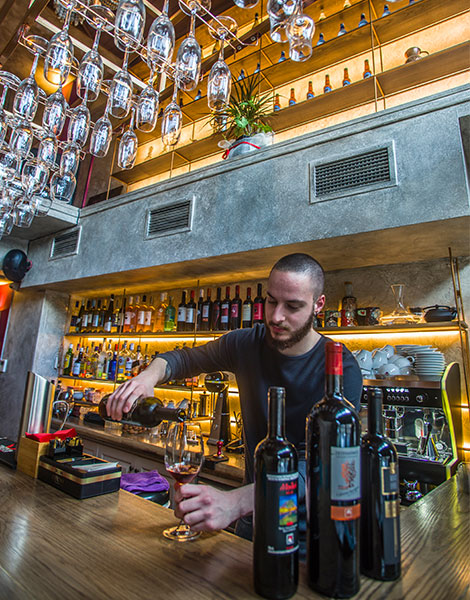
© Clairy Moustafellou
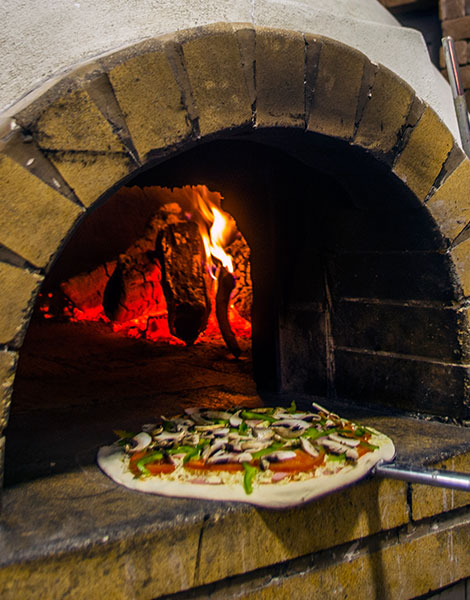
© Clairy Moustafellou
Harmaina (tel. +30 6947-269971), open from morning until evening is the only choice in the district of the same name, offering coffee and food. As soon as the weather warms, the seating is moved to an outdoor area in the square underneath the plane trees. Its owner, Ilias Potsios, also runs the only municipally-run guesthouse.
Megalo Kafeneio 1929 – for coffee in the morning and drinks late at night (tel. +30 6972-865660) this historic café plays low-key jazz and funk. Visit their Facebook page to see what live music and other performances are planned.
Also worth visiting are Coffee Wine Nord (tel +30 22653-01450) and Cactus Coffee & Beer (tel. +30 22650-28157).
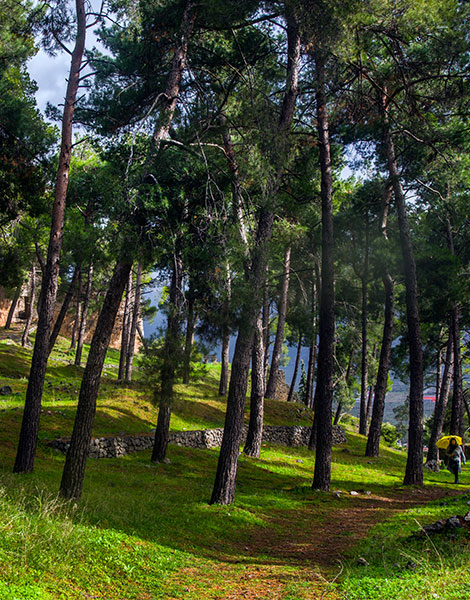
© Clairy Moustafellou
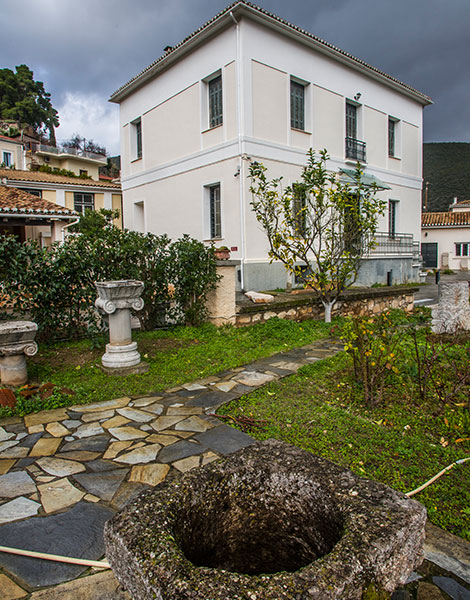
© Clairy Moustafellou
Sights
The Archaeological Museum of Amfissa – On the ground floor you will see important finds from around the wider area. On the first floor, artifacts are displayed from the ancient city that stood just below the modern town of Amfissa, including an ancient coin collection. For opening hours call +30 22650-23344.
The Castle – At the site of the ancient acropolis, a medieval castle now stands built by the Franks and the Catalans. In its interior one can discern ruins from different time periods. The route to and around the castle is also one of the prettiest walks in Amfissa. You can reach it either by car or by following signs on the routes K1 and K2 from the center of town.
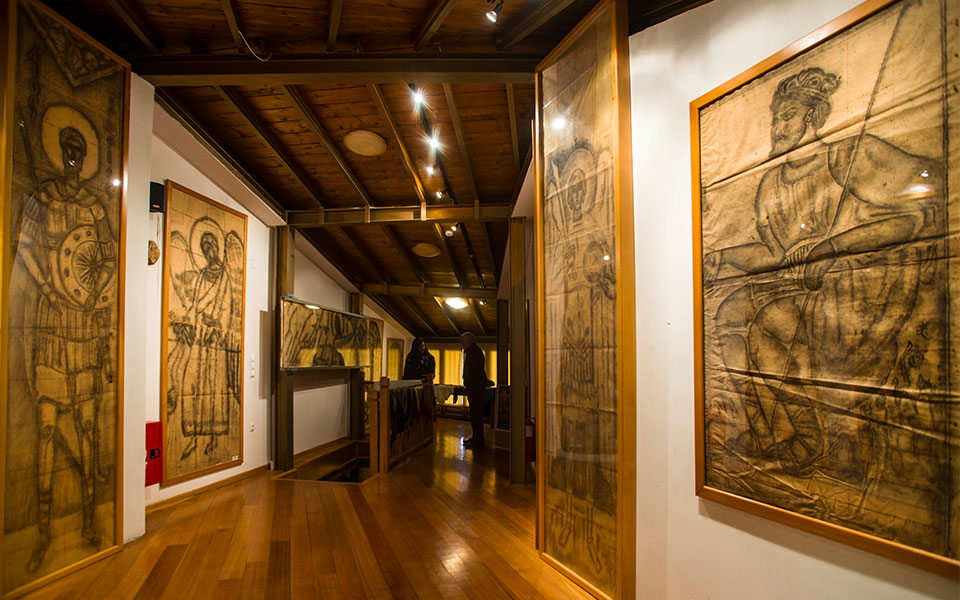
© Clairy Moustafellou
Metamorfosi tou Sotiros. A Byzantine church from the 11th century close to the castle.
Metropolitan Church (Evangelistria), (9 Agathonikou Karouzou). This church stands out for the depictions of the saints painted by Spyros Papaloukas, however it will soon be closed for renovations. Next to it is the ancient Vaptistirio (baptismal font) of Amfissa with interesting mosaics.
Spyros Papaloukas Municipal Art Gallery (Tambakika Amfissa, tel. +30 22650-23344, open daily 10.00-14.00, free entry). Houses a collection of large sketches made with charcoal by Spyros Papaloukas in preparation for creating the icons in the Metropolitan Church of Amfissa. For more information visit: www.visitdelphi.gr

